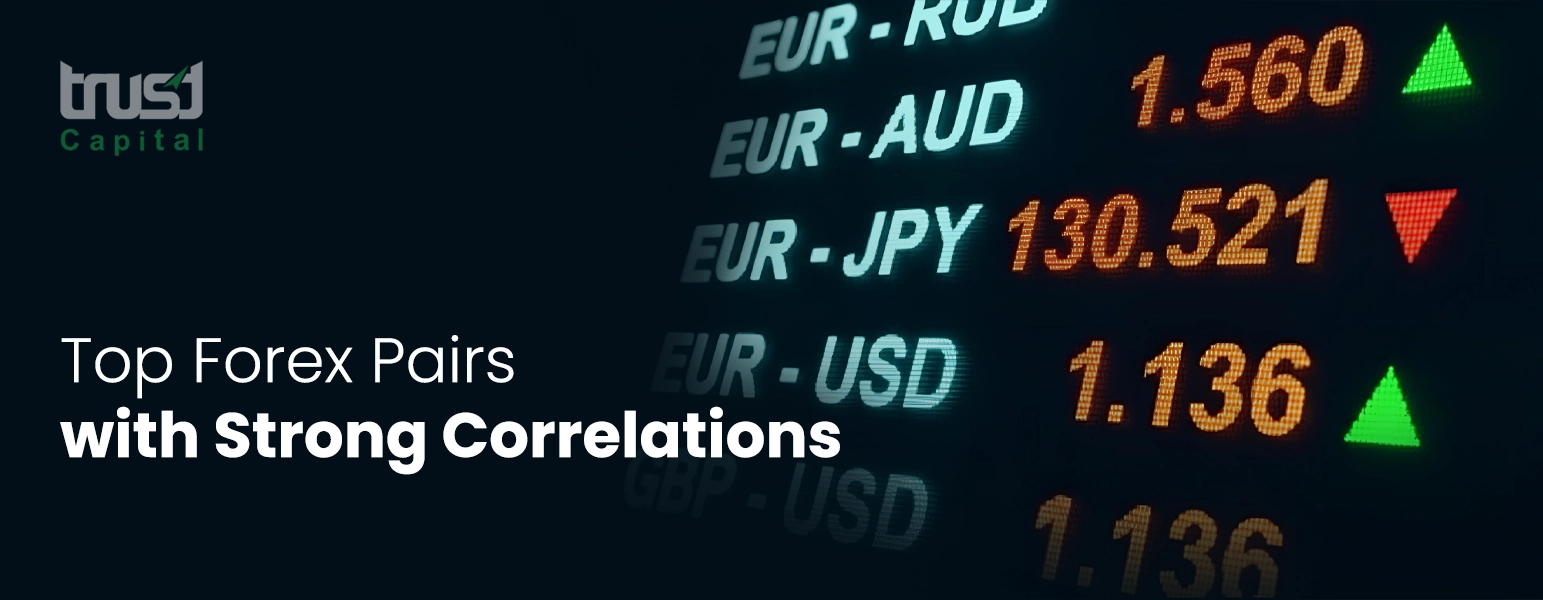Understanding Currency Correlations: How to Use Them in Your Trades

Currency correlations are a powerful yet often underused tool in Forex trading. By understanding how major currency pairs move in relation to one another, traders can gain valuable insights, reduce risk, and refine their trading strategies. This guide explores Forex correlation trends, the best correlated currency pairs, and practical correlation trading techniques to help you make more informed decisions in the market.
What Are Currency Correlations?

Currency correlations refer to the relationship between how two currency pairs move relative to each other. These movements can be:
-
Positive Correlation: Both pairs tend to move in the same direction.
-
Negative Correlation: Pairs often move in opposite directions.
-
Neutral Correlation: Little to no consistent relationship between the pairs.
Understanding these relationships allows traders to anticipate market movements, avoid overexposure, and identify new trading opportunities.
Why Currency Correlations Matter in Forex Trading
In Forex, currency pairs are interconnected due to economic, political, and financial factors. Recognizing these relationships helps traders:
-
Avoid taking trades that unintentionally double their risk.
-
Hedge positions more effectively.
-
Identify confirmation signals across correlated pairs.
-
Optimize their Forex correlation strategy.
Major Currency Pairs and Their Typical Relationships
Major currency pairs are among the most liquid and widely traded instruments in Forex. Some of the strongest correlations arise among them. Here are key relationships:
Highly Positively Correlated Pairs
-
EUR/USD and GBP/USD – Often move in the same direction due to similar economic influences.
-
AUD/USD and NZD/USD – Both influenced by commodity markets and regional dynamics.
-
USD/CHF and EUR/USD (negative USD correlation) – When USD weakens, both typically rise.
Highly Negatively Correlated Pairs
-
EUR/USD and USD/CHF – Strong inverse relationship.
-
GBP/USD and USD/JPY – Often move oppositely during risk-on/risk-off shifts.
Understanding the best correlated currency pairs helps traders predict potential moves and validate trade setups.
Best Correlated Currency Pairs to Watch
Some correlations hold strongly across time, making them especially useful for trading strategies. Here are the top correlated pairs in Forex:
-
EUR/USD ↔ GBP/USD (positive)
-
AUD/USD ↔ NZD/USD (positive)
-
EUR/USD ↔ USD/CHF (negative)
-
USD/CAD ↔ Oil prices (market correlation)
-
AUD/JPY ↔ Global equities (market sentiment correlation)
These relationships are essential tools in any best market correlation guide.
Correlation Trading Techniques

Successful correlation trading relies on incorporating data, charts, and strategic thinking. Here are effective techniques to try:
1. Confirmation Trading
Use correlated currency pairs to validate a trade idea. For example, if EUR/USD breaks resistance, GBP/USD often follows.
2. Divergence Trading
When two normally correlated pairs move apart, the weaker one may catch up. Traders use this mismatch for potential entries.
3. Hedging Through Correlations
Negative correlations allow traders to hedge. For instance, a long EUR/USD position may be balanced with a long USD/CHF.
4. Risk Diversification
Avoid opening multiple trades in highly correlated pairs that magnify risk unintentionally.
These correlation trading techniques help improve precision and reduce unnecessary exposure.
Forex Correlation Strategy: How to Apply It
Here’s a simple step-by-step approach:
-
Choose your currency pairs – Focus on major currency pairs for more stable correlations.
-
Check correlation tables – Identify whether relationships are positive or negative.
-
Analyze current market sentiment – Market drivers shift correlations.
-
Look for confluence – Combine correlation data with technical analysis.
-
Manage risk carefully – Correlations are strong but not perfect.
Using this method can help you identify top trading correlations and better predict currency movements.
Currency Trading Tips When Using Correlations
To get the most out of correlation-based strategies, keep these tips in mind:
-
Always update correlation data regularly—relationships change over time.
-
Avoid simultaneous positions in highly correlated pairs unless intentional.
-
Combine correlation insights with technical and fundamental analysis.
-
Watch for correlation breakdowns during high-impact news events.
-
Practice with a demo account before applying advanced strategies.
Conclusion
Currency correlations are an essential part of understanding market behavior. By recognizing how currency pairs relate to one another, traders can improve trade selection, enhance risk management, and gain a deeper grasp of global Forex dynamics. Whether you're using a Forex correlation strategy, exploring the best currency correlation setups, or examining top correlated pairs in Forex, these insights can significantly strengthen your trading approach.

